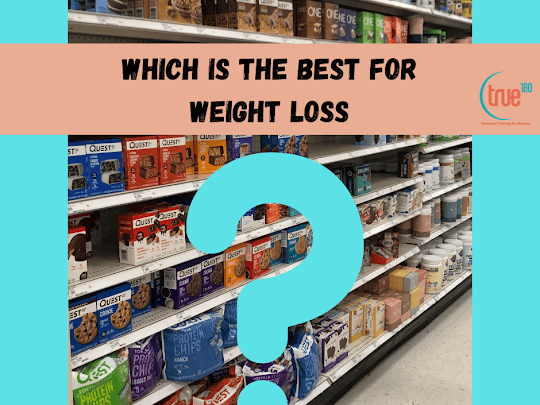We got another awesome question from a T180 lady. Maybe you’ve wondered the same thing….
Q: What’s the best protein bar for weight loss?
A: The none brand of protein bar. (I am very clever.) By “none brand” I mean that I can’t think of a single protein bar that I would recommend for anyone looking to lose weight. Not even the bars from our favorite supplement company in the world, Dotfit.
There are 3 important reasons why I am saying none:
#1. Too many calories for too little protein:weight loss is about creating a calorie deficit. All diets (low carb, low fat, vegetarian, etc.) work the same way – they help people create calorie deficits, and that causes weight loss. If you are looking to ensure the weight you lose is fat vs. not-fat (muscle, bone density, etc.) then you will need to eat enough protein and do some strength training on a regular basis.
Here’s an example: 1 cup Fat free Greek yogurt (227g) has 120 calories and 22 grams of protein. This means you are getting 1 gram of protein for only 5.5 calories.
For comparison I went on Amazon and took the nutrition from the #1 best-seller and it’s 20 grams for 202 calories. If this protein count is correct, and independent lab testing of this particular brand says its not, then it would take 10.1 calories to get 1 gram of protein. As you can see that is twice as many calories per gram of protein, and if you are trying to use bars to meet your protein needs, then it’s going to be really hard, if not impossible, to get the protein and stay under your calorie goal.
#2. Too dense with calories: calorie density is how many calories per unit of weight of food. An easy example is to realize that it takes 6 apples to equal the calories in 1 Big Mac. 6 medium apples is about 1 kilogram (1,000 grams) of food (2.2 pounds) and a Big Mac is 219 grams of food. Taste preferences aside, it’s hard to get full on something like a Big Mac because it packs so many calories into so little space.
Foods that have low calorie density make it easier to eat enough food to feel full while keeping your calorie intake reasonable. Low calorie density foods are things like fruits, vegetables and lean sources of protein. One could theoretically eat too much fat free Greek yogurt, but it takes up a lot of space in your stomach, is high in protein (and protein makes us feel full), and it’s not hyper-palatable (meaning it hasn’t been designed to trigger the reward centers in your brain to scream “more! More! More!!!!”)
If we look at the exact same protein bar we used in the first example, that bar weighs only 50 grams and has 202 calories. That is a little over 4 calories per gram. A snickers bar is 44 grams and 215 calories, or 4.8 calories per gram… in other words, they protein bar and the snicker’s bar aren’t very different. The fat free Greek yogurt has 0.5 calories per gram, which is 8x more food per calorie.
#3. Usually mislabeled: making something that is high in protein, shelf stable, relatively cheap, and doesn’t taste like sawdust is ridiculously difficult. When you consider the need for supplement manufacturers, wholesalers and retailers to all make a profit you just aren’t left with that much money to spend on the ingredients. If your competitors are all cheating to inflate the protein content on the label, and you aren’t cheating then your bar looks expensive and low in protein… it’s not a justification of mislabeling, but it is understandable why someone with the best of intentions would end up fudging the numbers.
Let’s go back to the bar in the example from #1. I won’t say which brand it is, but labdoor.com has analyzed products from their lines and found them to have at least 20% less protein than the label claims.
Here’s More on Protein and Calories
· Need more ways to get protein with minimal calories. (Lots of good ideas for vegetarians too!) · Is all protein created equal?
Still have questions? Please let us know!

